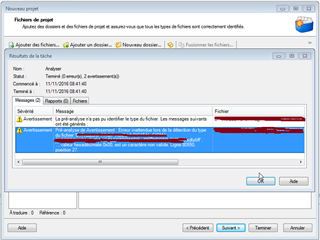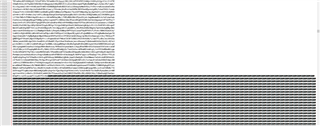Hi everyone,
I have a .sdlproj file with which i worked all this week, but today i was unable to open it. i had this error message:
une erreur est survenue lors du traitement des arguments de la ligne de commande : Une erreur s'est produite lors de la tentative d'identification de la version du fichier.
UTILISATION : SDLTradosStudio.exe [/help|/?] /arg1 val1 /arg2 val2
Tâche : NoAutoUpdate
Description: Démarre l'application sans rechercher automatiquement les mises à jour.
Utilisation : SDLTradosStudio.exe /noautoupdate
Arguments :
/noautoupdate Démarre l'application sans rechercher automatiquement les mises à jour.
Tâche : Ouvrir un alignement
Description: Ouvre un alignement dans l'affichage Alignement.
Utilisation : SDLTradosStudio.exe /openAlignment
Arguments :
/openAlignment Chemin de fichier complet de l'alignement que vous souhaitez ouvrir.
Tâche : Créer un projet
Description: Lance l'Assistant de création de projet.
Utilisation : SDLTradosStudio.exe /createProject [/files [ ...]] [/name ] [/template ] [/referenceProject ]
Arguments :
/createProject Lance l'Assistant de création de projet.
/files Chemin de fichier complet d'un ou de plusieurs documents ou dossiers à ajouter à l'Assistant de création de projet.
/name Nom du projet
/template Nom de modèle existant ou chemin de fichier à utiliser.
/referenceProject Chemin de fichier du projet de référence existant à utiliser.
Tâche : Ouvrir un document
Description: Ouvre un ou plusieurs documents dans l'affichage Éditeur.
Utilisation : SDLTradosStudio.exe /openDocument [ ...]
Arguments :
/openDocument Chemin de fichier complet d'un ou de plusieurs documents à ouvrir.
Tâche : Ouvrir une MT basée sur des fichiers
Description: Ouvre une ou plusieurs MT basées sur des fichiers dans l'affichage MT.
Utilisation : SDLTradosStudio.exe /openFileTm [ ...]
Arguments :
/openFileTm Chemin de fichier complet d'une ou de plusieurs MT à ouvrir.
Tâche : Ouvrir un package
Description: Ouvre un package dans l'affichage Package.
Utilisation : SDLTradosStudio.exe /openPackage
Arguments :
/openPackage Chemin de fichier complet du package à ouvrir.
Tâche : Ouvrir un projet
Description: Ouvre un projet dans l'affichage Projets.
Utilisation : SDLTradosStudio.exe /openProject
Arguments :
/openProject Chemin de fichier complet d'un projet à ouvrir.
Tâche : Ouvrir le projet sur serveur
Description: Ouvre un projet sur serveur dans l'affichage Projets.
Utilisation : SDLTradosStudio.exe /openServerProject
Arguments :
/openServerProject URI d'un projet sur serveur à ouvrir.
help!

 Translate
Translate

